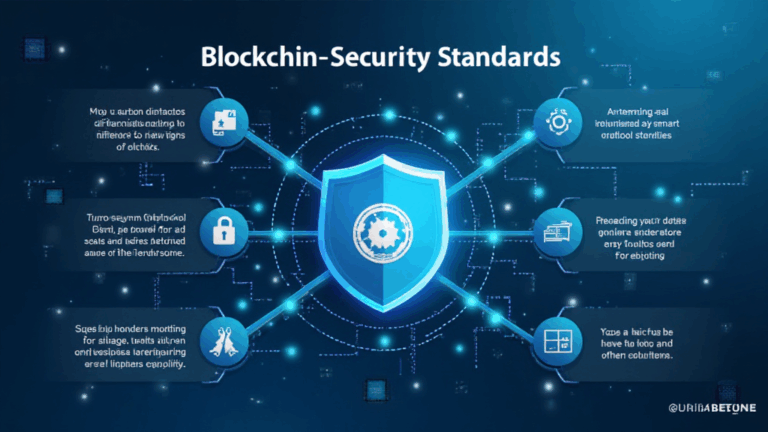
Bitcoin DeFi Flash Loan Attacks: Understanding Risks and Prevention
With $4.1 billion lost to DeFi hacks in 2024 alone, DeFi has become a double-edged sword in the world of cryptocurrencies. The innovation of decentralized finance often brings with it significant vulnerabilities that cybercriminals are readily exploiting. Among these, flash loan attacks are particularly concerning, allowing attackers to manipulate liquidity with explosive speed. In this article, we’ll dive into the mechanics behind these attacks, the risks involved, and preventive measures that both developers and users can take to mitigate threats, ensuring a safer trading environment.
What Are Flash Loans?
Flash loans are a unique financial instrument in the DeFi space, enabling users to borrow large amounts of cryptocurrency without needing collateral, provided the borrowed amount is returned within a single transaction block. Here’s how it works:
- A user takes out a flash loan of $1 million from a liquidity pool.
- They utilize the loan to undertake a series of transactions across exchanges, capitalizing on price differences.
- Finally, they repay the flash loan with a small fee, pocketing the profits from the arbitrage.
While this mechanism can be a powerful tool for traders, it can also be exploited for malicious purposes. According to recent industry findings, flash loan attacks accounted for 20% of all hacks in 2024, showcasing an alarming trend.

How Do Flash Loan Attacks Work?
Let’s break it down to understand the process of a flash loan attack:
Here’s the catch:
The attacker first borrows a large sum of money through a flash loan. This is possible since there is no collateral needed as long as they repay the loan within a single transaction. They then manipulate the market for their advantage, often by:
- Exploiting vulnerabilities: Attacks typically target weaknesses in smart contracts to trigger undesired behaviors, leading to a loss of funds.
- Price manipulation: By creating artificial price swings within decentralized exchanges, they can make profits at others’ expense.
- Liquidation risks: They may also force liquidation on assets held by other users, driving down the price.
Ultimately, the hacker repays the flash loan and walks away with ill-gotten gains while leaving the protocol in chaos.
Real-World Examples of Flash Loan Attacks
Several high-profile cases have highlighted the risk associated with flash loans in the DeFi ecosystem. Here are a few illustrative examples:
- bZx Network (2020): This protocol suffered a $1 million loss from a flash loan attack in February 2020 when attackers leveraged vulnerabilities in its smart contracts.
- Alpha Homora (2021): In February 2021, attackers exploited Alpha Homora’s liquidity pools through flash loans, resulting in over $37 million in losses.
- DeFi100 (2021): By using a flash loan, hackers were able to create an artificial deficit in liquidity, leading to a $28 million loss.
Each of these incidents serves as a stark reminder of the need for heightened security measures to prevent such attacks.
Strategies to Prevent Flash Loan Attacks
In response to the rising threats posed by flash loan attacks, various strategies can help secure DeFi applications and user funds:
- Conduct comprehensive audits: Regularly auditing smart contracts can help identify and fix weak points, significantly reducing risks of exploitation.
- Implement price oracles: Utilize reliable price oracles to enhance transaction security by providing accurate market pricing data.
- Rate limit flash loans: Setting a cap on the maximum amount that can be borrowed in a flash loan can mitigate potential losses.
- Use time-locks: Adding time-lock features before the execution of large transactions can give the underlying protocol a chance to react to irregularities.
Incorporating these preventive measures helps bolster the overall security of DeFi platforms against flash loan attacks.
International Market Perspective: Vietnam’s Growing Crypto Landscape
In Vietnam, the crypto market has witnessed tremendous growth with a 60% increase in the number of users engaging with DeFi protocols from 2023 to 2024. This rapid adoption makes it critical for local platforms to ensure security and educate users about potential risks.
Translating the insight into Vietnamese, we use the term “tiêu chuẩn an ninh blockchain” to emphasize the importance of securing blockchain standards which are essential in fostering trust among users.
The Future of DeFi Security
As the DeFi landscape evolves, so too must the security measures in place. Innovative technologies—such as automated risk assessment tools and improved decentralized identity protocols—are emerging to combat threats effectively. It’s becoming increasingly imperative for developers and users alike to prioritize security in their DeFi engagements.
Most importantly, with the rapid uptick in DeFi users, education about potential risks and the importance of security audits cannot be overstated. For instance, studying how to audit smart contracts has become vital for ensuring safe interactions within this decentralized framework.
Conclusion
As explored in this article, while Bitcoin DeFi flash loan attacks represent a substantial threat to user assets and the stability of the DeFi ecosystem, proactive measures can significantly decrease the risk of such exploits. Understanding the mechanics behind these attacks and investing in robust security implementations can help safeguard investments in the rapidly expanding DeFi landscape. By remaining vigilant and informed, both developers and users play a crucial role in ensuring the security of their assets.
For those looking to navigate the complicated world of DeFi, staying updated on the latest security practices will be essential moving forward. We encourage you to keep learning and securing your funds in what promises to be a revolutionary era in finance.
btcmajor offers resources and tools to help users and developers alike stay informed about emerging risks and best practices in DeFi.
Author: Dr. James Hudson, a blockchain security expert with over 50 published papers and a lead auditor for several prominent blockchain projects.






